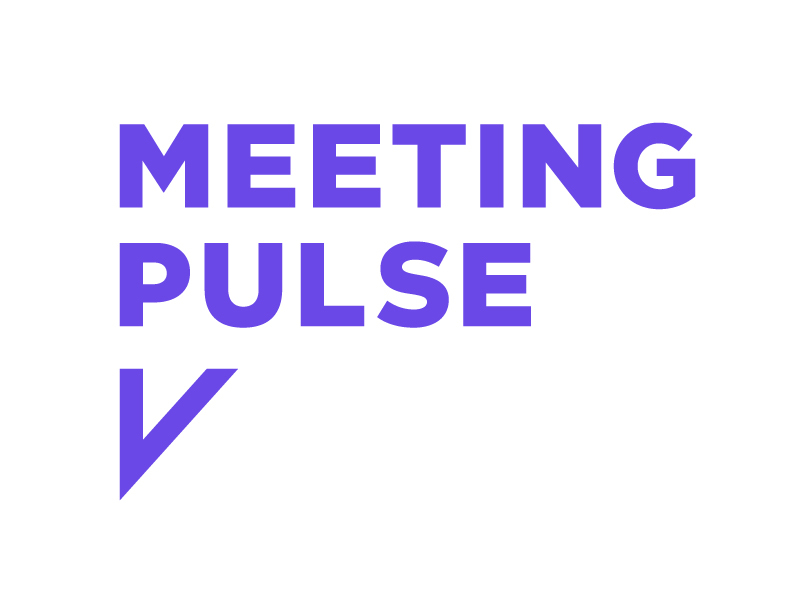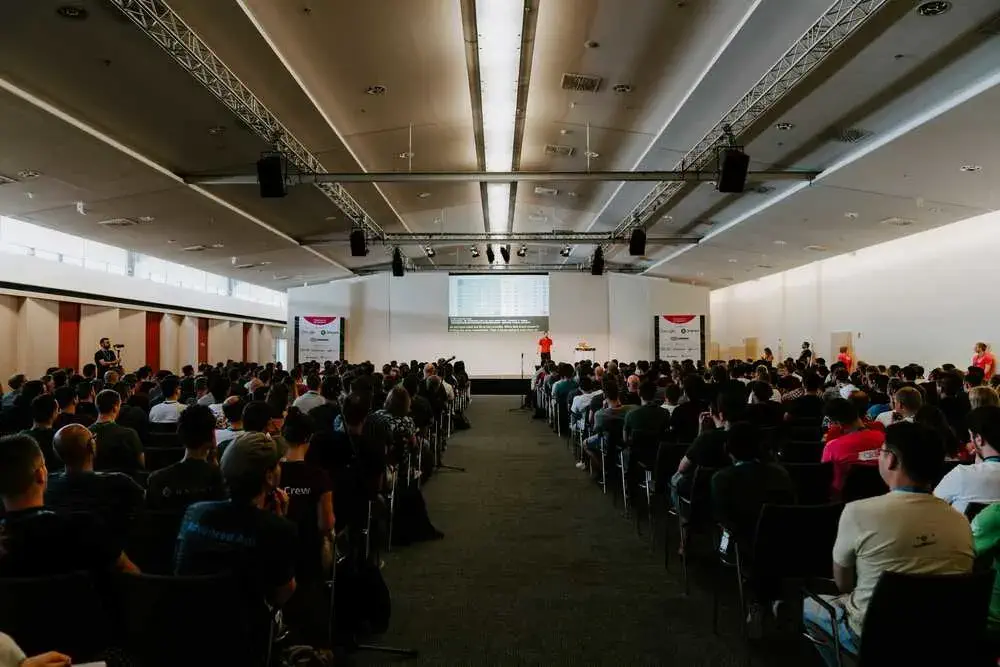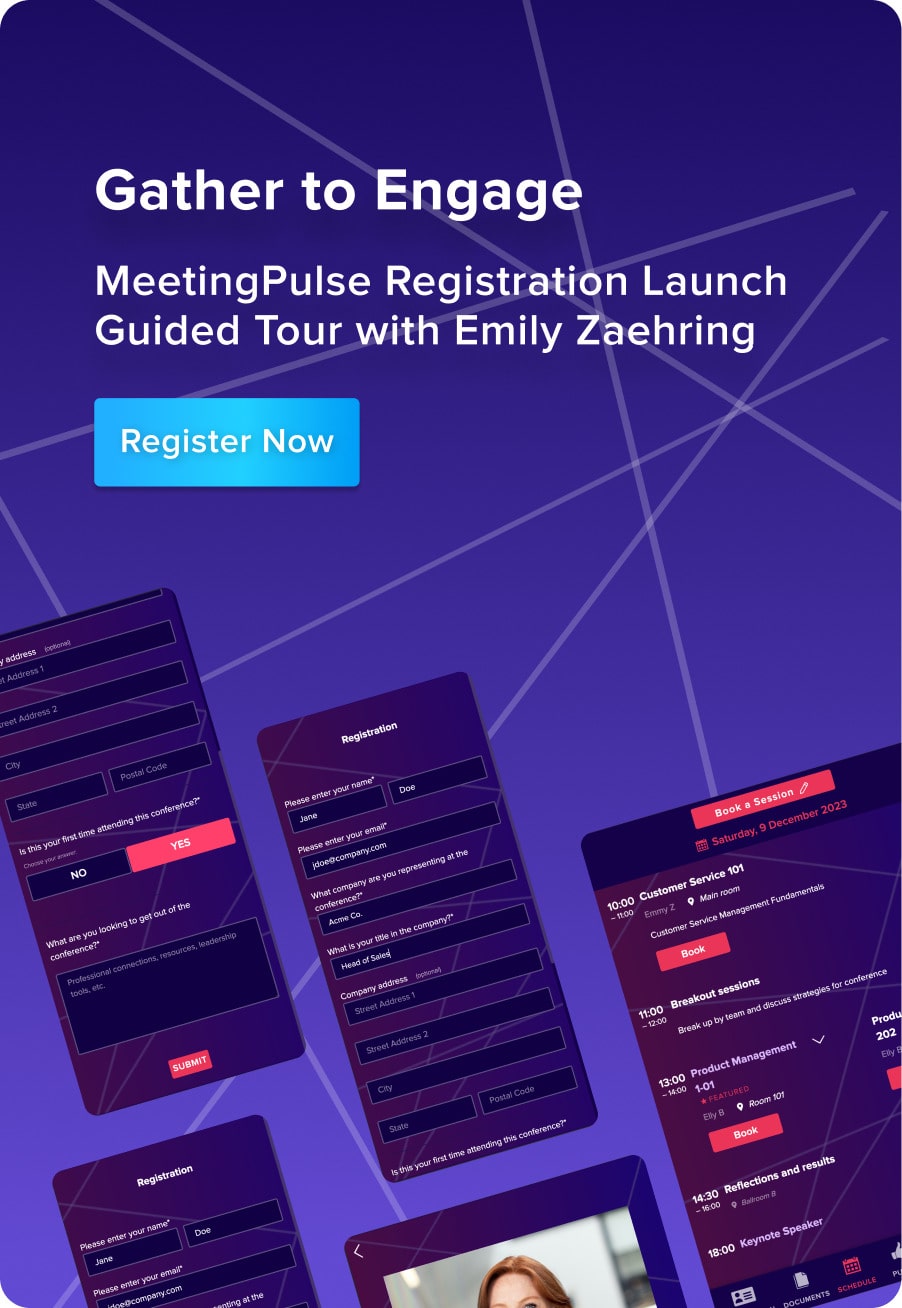When a certain large financial services company found itself in the midst of a reorganization, it sought to build on one of its strengths — a deeply involved, committed workforce. But reorganizations are always challenging. While managing theirs, the company was about to learn the importance of doing employee engagement the right way.
To address the concerns of the company’s 6,000+ employees, the company’s leaders scheduled a series of town halls. They sought to quiet worries, gain access to their employees’ ideas for growth, and to integrate technology into the process. They had recently started using MeetingPulse, and offered up a choice to its employees — submit questions on MeetingPulse before the meeting, or use the roving mics at the town halls to ask questions.
Think mics always increase audience interaction?
At the first town hall, the company’s employees would take the mic, introduce themselves, and talk. This was typical, and not very productive: Often, what they talked about was background.
Sometimes, it was personal. If you listened carefully, you might find a question there, in the middle. After each such question, the meeting leaders would provide an answer, as best they could. Others listened, or seemed to. Then someone else would take the mic, and the process would repeat itself.
The town halls droned on and on. They made nothing clearer. They did not identify any effective ideas for moving forward. Moreover, instead of becoming calmer and more productive, employees seemed ever more anxious and increasingly disengaged.
Why weren’t the town halls working?
We at MeetingPulse think a lot about employee engagement and effective meetings, and we had some ideas. Here’s what we explained to them:
- The roving mic only looks like engagement, but it isn’t. The person who has the mic when asking the question is the only person speaking. If his/her question is of interest to others, the audience will be engaged, but often the question is irrelevant. The audience will tune out if the main speaker drones on. Similarly, they will tune out if the speaker at a roving mic does.
- The questions posed by audience members often do not connect to each other, or to larger concerns. Although the meeting leader may be able to answer each individual question, he or she will have trouble bringing all the answers together into a coherent presentation at the meeting’s end.
- Then again, questions posed by audience members can be repetitive. The meeting leader will still need to acknowledge each speaker and each question, even if the question is identical to its predecessor and answering the question adds no new information to the discussion.
- Answering individual questions in succession takes valuable time. Even the act of passing the mic around and having the asker give their name and department takes up valuable time. Questions that are irrelevant for most in the audience or variations on an already-asked question waste time. No wonder the town halls made people bored and anxious.
- It’s a matter of chance, not design, whether the important questions get asked. When there’s no way to know what questions are coming in ahead of time, it is possible to spend time on minor, irrelevant, or repetitive questions and not get the chance to answer the important ones.
How software replaced mics to better crowdsource employee opinions
After several ineffective town halls, the leaders at the company switched tacks. At the next town hall, they decided not to pass the mics around at all.
Instead, all questions had to come in through MeetingPulse. Employees wrote and submitted their own questions, or simply upvoted ones that were similar to theirs. Instead of 7 employees submitting or upvoting questions, nearly 40% of employees participated.
The result? Transformative.
- Questions that came in through MeetingPulse could be grouped thematically, allowing the meeting’s leaders to pick out key concerns and organize them together into a coherent agenda.
- The meeting leaders could make sure that the most broadly relevant questions got addressed. Important, broadly relevant questions got the discussion time they needed.
- Repetitions of the same questions were eliminated. An employee could upvote a question or concern similar to their own, without repeating the question.
- Concerns that were too specific or personal could be dealt with individually after the meeting, instead of taking up valuable public time. Employees still felt involved, acknowledged and listened to, but their individual concerns could be dealt in a more appropriate — and effective! — manner.
- Employees were engaged in the process. Although it would seem that submitting questions through an app was less personal than speaking at a meeting, employees were able to think more broadly about their concerns. They could see how the questions discussed at the meeting were important to them. As a result, employees felt like their voice was heard.
The Benefits
How did improving the town halls with software benefit the reorganization process?
- The town halls became more focused.
- They took less time, but accomplished more.
- They had a clear agenda, and clear take-aways.
- CEO knew that they were addressing issues that the employees cared about.
The company was able to provide its employees with the valuable information they needed during the reorganization. Moreover, they were able and to effectively access their employees’ ideas. They were able to do so using a program that required no hardware and runs in any browser. They didn’t need to install anything and had virtually no learning curve.
At MeetingPulse, we are passionate about organizational transparency and using audience response systems to improve communications and employee engagement.
If stories of using technology to improve company culture, employee engagement, and communication interest you, subscribe to our newsletter.






